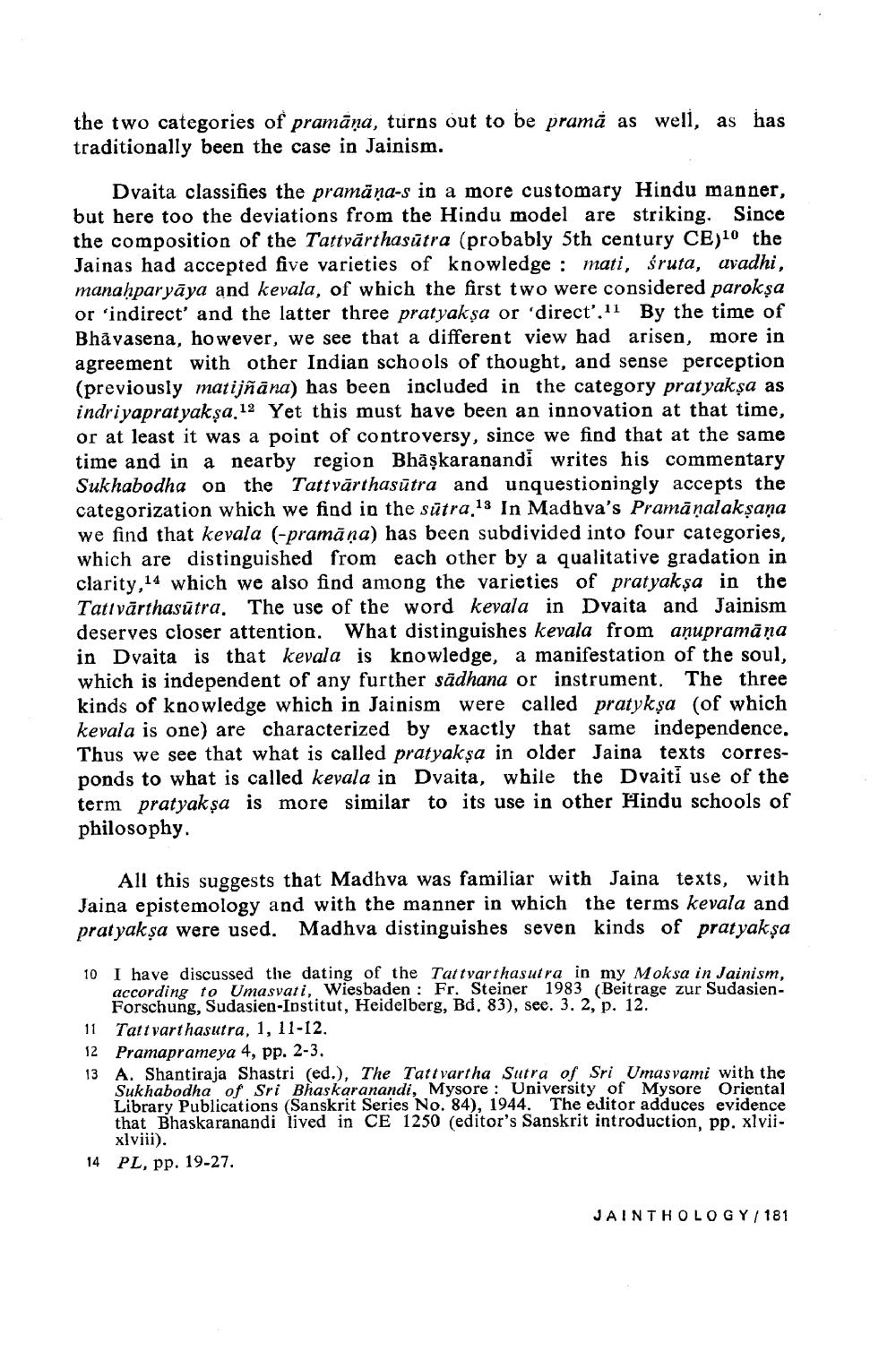________________
the two categories of pramāņa, turns out to be pramå as well, as has traditionally been the case in Jainism.
Dvaita classifies the pramäņa-s in a more customary Hindu manner, but here too the deviations from the Hindu model are striking. Since the composition of the Tattvārthasūtra (probably 5th century CE)10 the Jainas had accepted five varieties of knowledge : mati, śruta, avadhi, manahparyāya and kevala, of which the first two were considered parokşa or 'indirect' and the latter three pratyakşa or direct'. 11 By the time of Bhavasena, however, we see that a different view had arisen, more in agreement with other Indian schools of thought, and sense perception (previously matijñāna) has been included in the category pratyaksa as indri yapratyakşa.12 Yet this must have been an innovation at that time, or at least it was a point of controversy, since we find that at the same time and in a nearby region Bhāşkaranandi writes his commentary Sukhabodha on the Tattvārthasūtra and unquestioningly accepts the categorization which we find in the sūtra 13 In Madhva's Pramāņalaksaņa we find that kevala (-pramāņa) has been subdivided into four categories, which are distinguished from each other by a qualitative gradation in clarity, 14 which we also find among the varieties of pratyaksa in the Tatlvārthasūtra. The use of the word kevala in Dvaita and Jainism deserves closer attention. What distinguishes kevala from aņupramāņa in Dvaita is that kevala is knowledge, a manifestation of the soul, which is independent of any further sadhana or instrument. The three kinds of knowledge which in Jainism were called pratykşa (of which kevala is one) are characterized by exactly that same independence. Thus we see that what is called pratyaksa in older Jaina texts corresponds to what is called kevala in Dvaita, while the Dvaiti use of the term pratyakşa is more similar to its use in other Hindu schools of philosophy.
All this suggests that Madhva was familiar with Jaina texts, with Jaina epistemology and with the manner in which the terms kevala and pratyaksa were used. Madhva distinguishes seven kinds of pratyakşa
10 I have discussed the dating of the Tattvarthasutra in my Moksa in Jainism,
according to Umasvati, Wiesbaden: Fr. Steiner 1983 (Beitrage zur Sudasien
Forschung, Sudasien-Institut, Heidelberg, Bd. 83), see. 3. 2, p. 12. 11 Tatt vart hasutra, 1, 11-12. 12 Pramaprameya 4, pp. 2-3. 13 A. Shantiraja Shastri (ed.), The Tattvartha Sutra of Sri Umas vami with the
Sukhabodha of Sri Bhaskaranandi, Mysore : University of Mysore Oriental Library Publications (Sanskrit Series No. 84), 1944. The editor adduces evidence that Bhaskaranandi lived in CE 1250 (editor's Sanskrit introduction, pp. xlvii
xlviii). 14 PL, pp. 19-27.
JAINTHOLOGY/ 181




